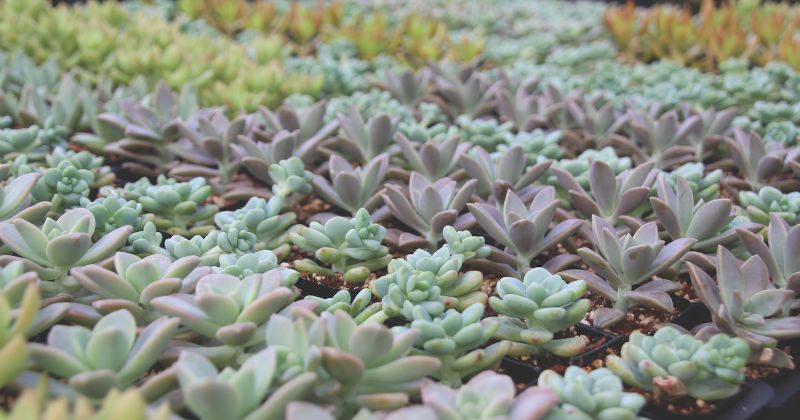
Success with Succulents
There has been growing interest in the ornamental production of succulents, which are plants with thick, fleshy stems and/ or leaves. Botanically, these plants are members of several different plant families including the cactus, stonecrop, ice plant and aloe families.
Most succulents grow naturally outdoors in climates with little rainfall and thus, have evolved plump leaves and stems that store water. Most succulents also grow in areas with high sunlight and high day temperatures.
As is the case with other ornamental crops, the conditions in which succulents grow outdoors should be considered when growing the same plants in controlled environments such as in greenhouses. This spring, I visited a few commercial growers who experienced mixed success in producing succulents, and the challenges can primarily be attributed to growing the crop too cold, under too low light, or in a media that retains too much water. The following are general production guidelines for successful production of succulents in controlled environments.
Use a very well-drained media. The most common production pitfall I’ve seen is growing succulents in the same media used for bedding plants and potted flowering plants. That type of media retains a lot of water and, because succulents use little water, such a substrate dries too slowly. Therefore, growers are advised to use a different, more porous media that includes sand or other ingredients that hold little water. Alternatively, you could amend your standard mix with 30 to 50 percent additional perlite to increase drainage and reduce water retention.
Water sparingly. Unlike most plants, the stomata of succulents are closed during the day, meaning that they lose little water (and take up little carbon dioxide) during the day. This is a survival strategy so that plants can tolerate rather extreme conditions outdoors including minimal rainfall. Therefore, growers who water plants well in anticipation of drying out on a warm, sunny day are not advised to do that with succulents. The substrate should be allowed to dry out between waterings, which is easier to accomplish when the media is very well drained.
Provide moderate to high temperatures. Although most succulents can tolerate low temperatures (50 to 55° F), growth will increase as temperature increases, so an average daily temperature of 70 to 75° F is suggested. Higher day temperatures can be provided if the night is cooler.
Generally, deliver high light. Some succulents, especially those with variegated foliage, do not tolerate full sun well, but most succulents do best in greenhouses under high light conditions. Therefore, supplemental lighting is recommended when the daily light integral is low in the greenhouse (less than 10 to 12 mol∙m−2∙d−1).
Do not place hanging baskets overhead. There are two reasons why hanging baskets should not be placed above succulents. First, the hanging baskets reduce the amount of light transmitted to succulents below, which slows plant growth and rooting. This is especially a concern during the winter and early spring, when light is limiting in many locations. Second, when the baskets are watered, water often drains from the baskets and drips down to plants below, which keeps the succulents wetter than desired.
Erik Runkle is professor and floriculture extension specialist in the department of horticulture at Michigan State University. He can be reached at runkleer@msu.edu.


 Video Library
Video Library 




















